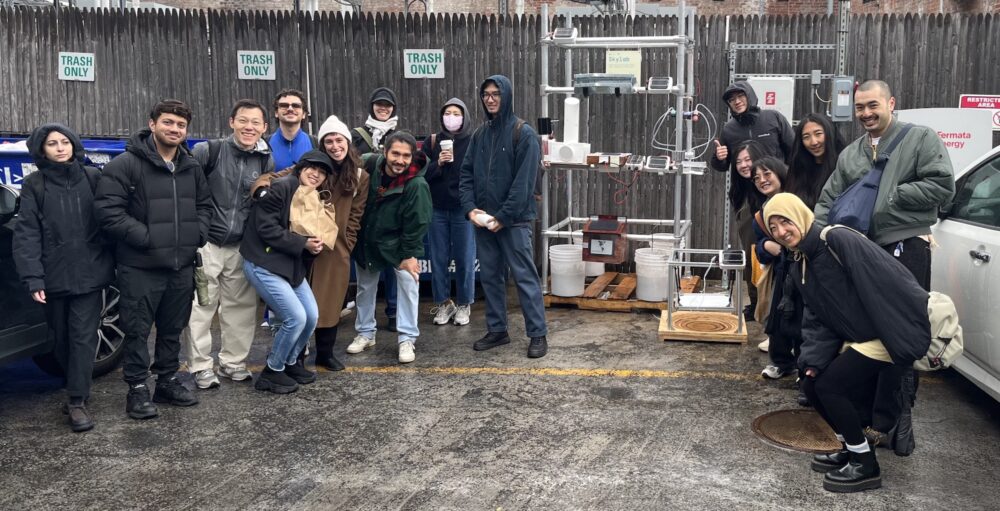
- Office Hours
- Student Documentation
- Deliverables
- Assignments
- Weekly Syllabus [ITP]
- Class 1, January 23: Hi!
- Class 2, January 30: Making Things Move
- Class 3, February 6: Capturing with Capacitors
- Class 4, February 13: Big Kinetic
- Class 5, February 20: Kinetic Presentations
- Class 6, February 27: Let there be…
- Class 7, March 6: Voltaic Field Trip
- Class 8, March 13: Solar 2, Research Round 1
- Class 9, March 20: Advanced Solar
- [ Spring Break ]
- Class 10, April 3: Solar MVP Presentations
- Class 11, April 10: Special Topics
- Class 12, April 17: Special Topics, Research Round 2
- Class 13, April 24: Voltaic Site Visit #2
- Class 14, May 1: Final Presentations
Note – this is a living document, weekly homework and reading prompts will be added as the semester goes, and any adjustments to the schedule and topics will be reflected here.
Office Hours
This is my online office hour calendar.
Student Documentation
Please post links to your class documentation in this shared spreadsheet (NYU access required).
Deliverables
- Kinetic project partial demo in week 3 (Feb 6), project presentation in week 5 (Feb 20)
- Research project presentation either week 8 (March 13) or week 12 (April 17) depending on theme.
- Solar MVP demo in week 10 (April 3)
- Final presentations week 14 (May 1)
Additional week-by-week prompts and readings will be in the syllabus below and should be responded to on your documentation site.
We will visit the company Voltaic in the Navy Yard on class 7 (March 6) and depending on projects, possibly again class 13 (April 24).
Assignments
Detailed explanations of each assignment can be found in the Project Briefs.
Kinetic project
Turn motion into light
Due: Generator demo in week 3 (Feb 6), project presentation in week 5 (Feb 20).
We begin the hands-on work of the class with a literal hands-on assignment: turning cranks to generate electricity. Any relative motion between magnets and conductors will induce electrical current in the conductor. Thus electrical motors are also electrical generators, and you can use this fact to easily power things with motion. A relatively forgiving thing to power is an LED.
The kinetic project challenge is to turn motion into light. You may work individually or in groups up to three. For all details, see the Kinetic project brief.
Solar project
Turn light into computation
I’m very excited that as of 2024 year, we have amazing support from our neighbor, Voltaic! Voltaic is a Brooklyn-based company that makes excellent solar panels and battery packs optimized for off-grid IoT projects. To do this right is expensive, so their hardware is a little out of reach for most student projects. However, not only are they helping us by loaning their best-in-class components, but they are also giving us space to set up outdoor projects in the Navy Yard – a first for this class!
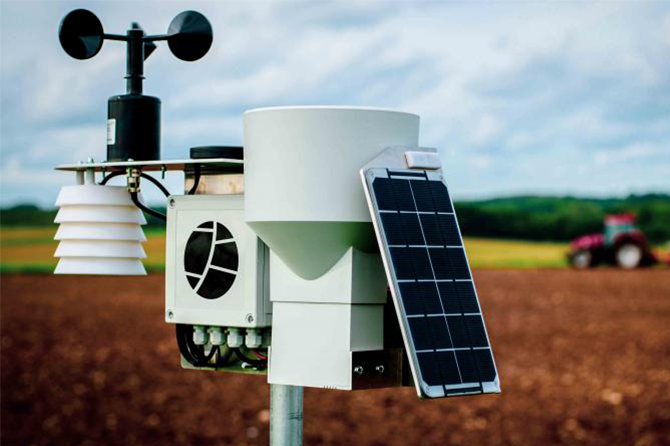
There are two ways to do the solar project. You may take a 5 week path, where you get a basic computational load (e.g. microcontroller, Raspberry pi, etc.) running off solar at the Navy Yard location for several days. These “MVP” solar projects will be demonstrated in week 10 after Spring Break.
If you go this route, you may develop a non-solar project as a final, either by expanding your kinetic project (recommended) or something entirely new (less reccomended simply based on work load required).
Your second option is to treat the solar project as a final, too. You would still demonstrate that you’ve accomplished the basics by week 10 (running something on solar power), but you would have until the end of the semester to develop a more ambitious solar installation, leave it running longer in situ, and provide more polished final documentation. (Note, all solar teams last year elected to do this.)
For more notes, see the Solar Project Brief.
Research Project
Working together for a brighter future
The research project is a chance to dig into a subject of your choice. You will research a topic of interest, and distill it into a 5-8 minute presentation that you will give to the class to educate us.
This year I’d like to group the projects around the following themes (please note specific dates for each thematic presentation):
- Energy and AI (March 13)
- Art, Artists, and Activists working with Energy (March 13)
- Embodied Energy (April 17)
- The Future of Energy Storage or Transmission (April 17)
For students interested in a given topic, I invite you to coordinate the research. This could be as minimal as simply discussing with each other what specific areas you’ll cover (so as to avoid overlap) to treating the research as a group project, and presenting together.
Alt Final
See also the notes under the solar project: you may expand solar into the final (as all students did in 2024), or do a separate, non-solar final. Because the MVP solar project takes up a large portion of the middle of the semester, if you elect to do a separate final for Energy class is somewhat reduced in scope. If you choose to go this route, please coordinate with me.
Participation
Your engaged participation in class (both listening and speaking) is extremely important. The class works best if you actively work to get information out of me! A distant second best is if you passively receive information I present. And worst of all is not receiving the information at all by missing the class, arriving late, or not paying attention. (Tip – this is true of most classes.)
If you have any issues and can’t join class meetings, please let me know before the class so I can plan accordingly. Two or more absences is grounds for failure. Chronic lateness or early departure may also affect your grade.
A note on Zoom: A hybrid class is, at best, a suboptimal experience for the remote participants. I want to avoid using zoom during our class sessions whenever possible in favor of in person meetings. However, in cases where students are positive for Covid and cannot come to class, I will allow them to join via zoom. Other reasons (hung over, traveling for work, attending a wedding, etc…) are not cause for Zoom.
Grading
The most important thing you can do is arrive to each class on time and be prepared to actively participate and engage with the material. Two or more unexcused absences will result in failing the class. Excessive lateness is considered an absence. Please put your best effort into assignments and readings, and keep a record of your work online.
ITP is pass fail, but the equivalent of a B or higher is required to pass.
- 30% In-class work and participation, readings, discussions
- 10% Documentation – project docs and weekly updates
- 15% Kinetic project
- 15% Solar project MVP
- 15% Research Project
- 15% Final (expanded solar or alternate)
Weekly Syllabus [ITP]
Class 1, January 23: Hi!
Introductions – who are you, who am I? Origin, purpose and organization of the class. Blackout stories.
In class: Jump!
Read: This syllabus! Actually – maybe don’t read every word, but scan over it to learn what lives where. Look over our schedule, the projects and deliverables, and the resources for readings, materials, measurement techniques etc. What are you particularly interested in? Anything you expected to see that you don’t?
For the kinetic assignment, pay particular attention to my notes on motors and steppers under Resources/”Energy Converters“, as well as the videos related to generating and conditioning electricity.
Read/Listen:
So much is happening right now in the US and globally related to energy. Two recent podcasts will help understand some of what is going on. Neither is a perfect energy introduction, so many terms and acronyms may be unfamiliar, but sample these and look for overlap with your interests:
Energy Gang, What can we expect form energy in 2025?
NY Times Daily, Trump’s Energy-related executive orders (this will be paywalled eventually)
For next week:
- Add your documentation link to class spreadsheet.
- Complete the brief intake form covering your interest and experience.
- Post two questions about the syllabus to your blog. What are you particularly interested in? Anything you expected to see that you don’t?
- Get the Smil text.
- Find a DC gearmotor and/or a stepper motor. As a general rule, about fist sized is good, and you should be able to turn the shaft by hand (or with pliers if there is a large gear reduction).
- Bring to class next week: multimeter, breadboard, gearmotor and/or stepper.
- Begin to brainstorm what kind of motion you can capture for your kinetic project.
Presentation Materials:
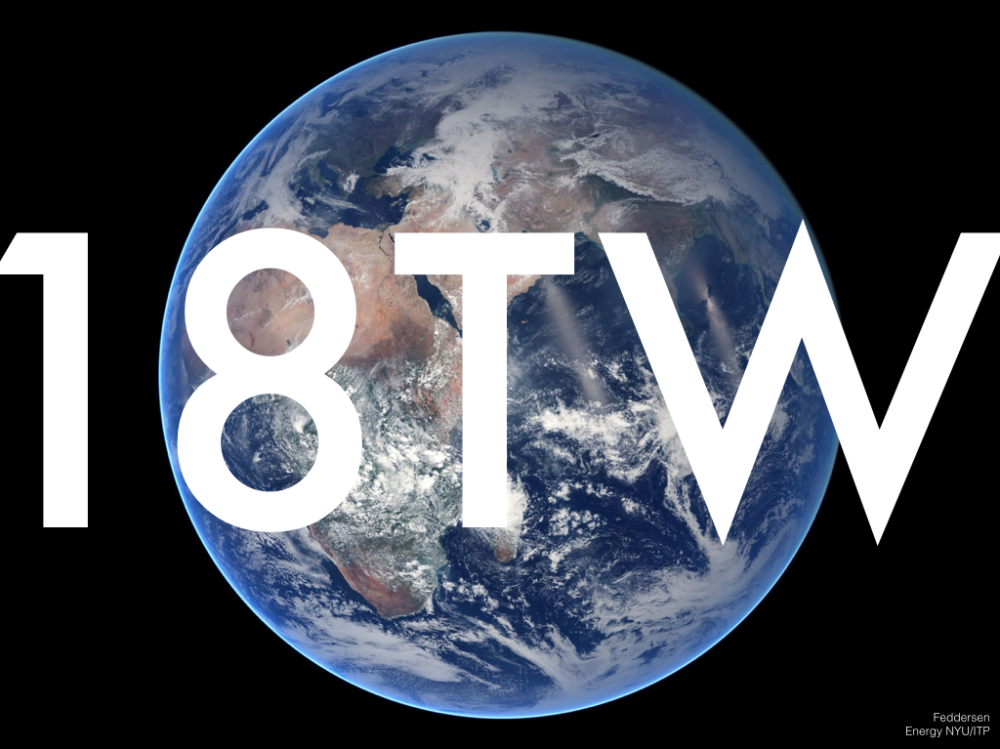
This video is a sort of overview of all the steps necessary for a basic kinetic->electricity->light activity. More notes on Vimeo.
Class 2, January 30: Making Things Move
Kinetic energy, and a 15 minute history of energy since the beginning of the universe.
In class: Kinetic energy introduction. Hands-on with the parts you’ve found. Short circuit current, open circuit voltage. Entire history of energy. Kinetic technical material.
Read:
- “Energy Scavenging for Mobile and Wireless Electronics” by Paradiso and Starner of MIT. Not recent, but an excellent overview of all the ways we might power electronic devices with ambient power harnessed from the environment. Link is below.
- Stuart McMillen’s illustrated essay about energy in terms of the human body. This idea traces back to Buckminster Fuller, and is probably the basis for Chu’s concept of energy servants mentioned in the lecture. Note: this work uses the image of ‘energy slaves’ as a central metaphor for making this comparison.

Several additional written essays by McMillen discussing the work and the ideas behind it are great optional resources for additional material. Thanks go to Todd Whitney from Energy 2021 for finding this excellent resource.
For next week:
- Decide if you are working in a group.
- Consider how to condition the output of your generator. Do you need to rectify AC? Smooth the output? Store energy? Limit voltage? Identify what parts your particular application will need.
- Sketch a concept for your kinetic project and post to your blog. Identify components you need that you will order or make.
Presentation Materials:
Note – I’m front-loading a lot of material here. We won’t get to all of it in this class but we will cover this material over the next several weeks.
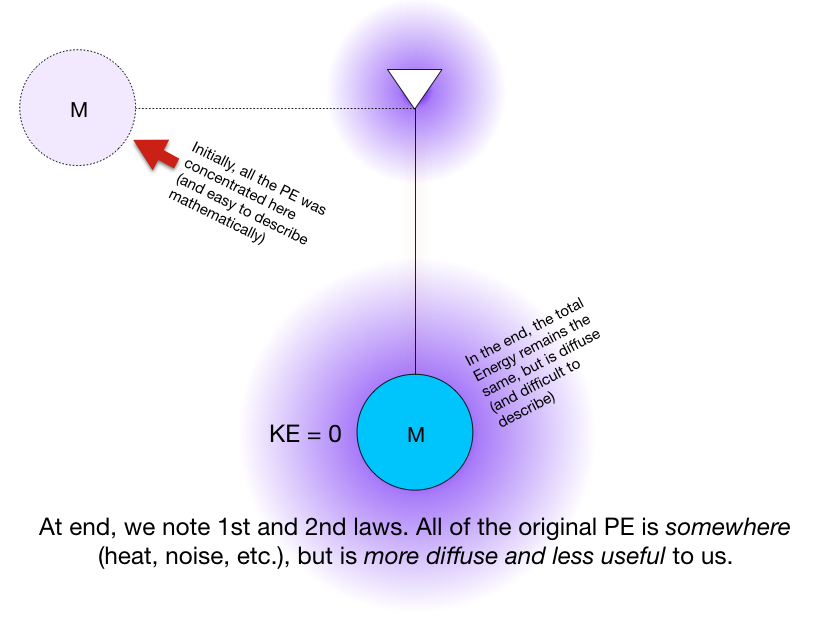
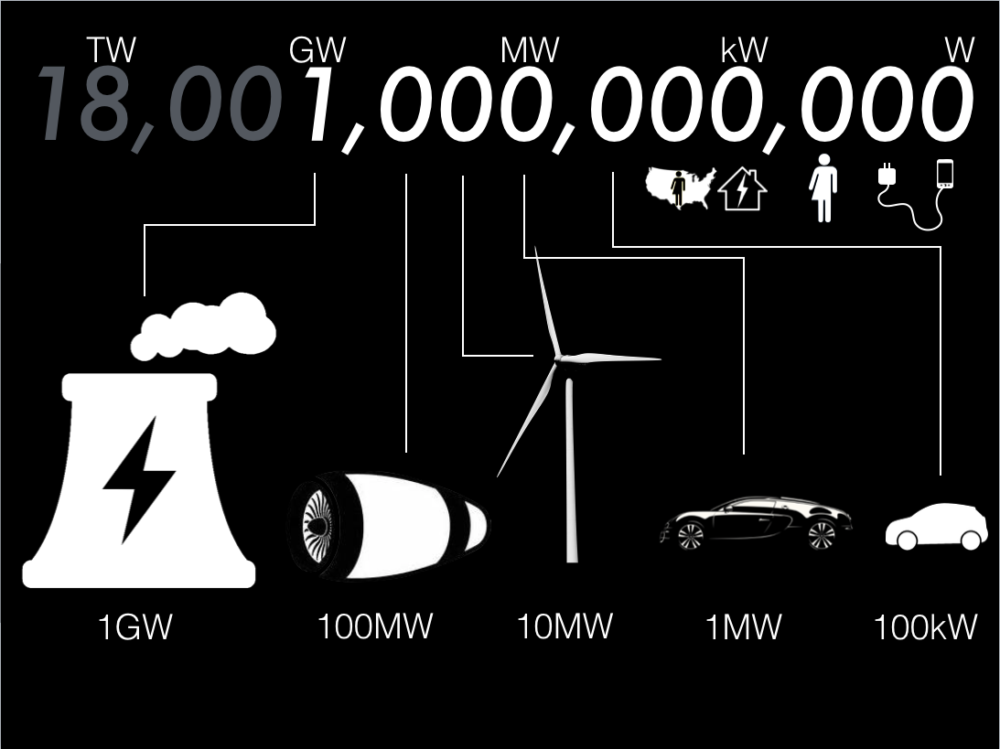
Check out Mathura’s documentation of a great kinetic-electrical car (from 2016). So many LEDs!
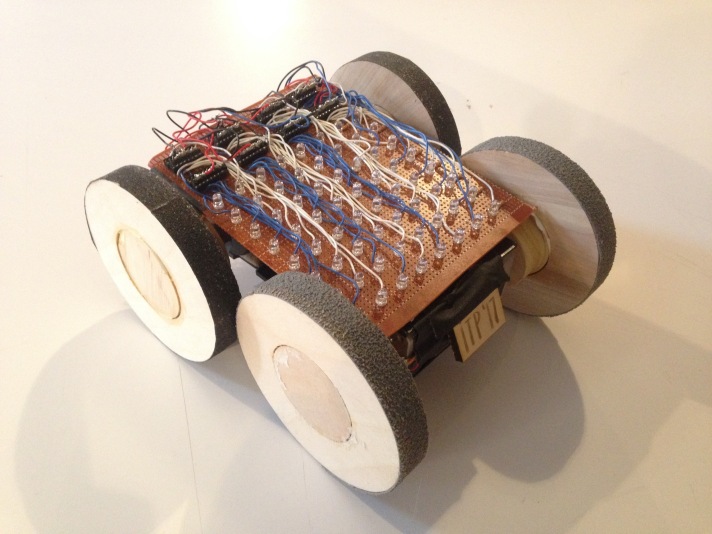
See also – Daniel Ryan Johnston’s tear down of a shower head that lights up from the motion of water.
Rectification circuit – where we’re headed by next week.
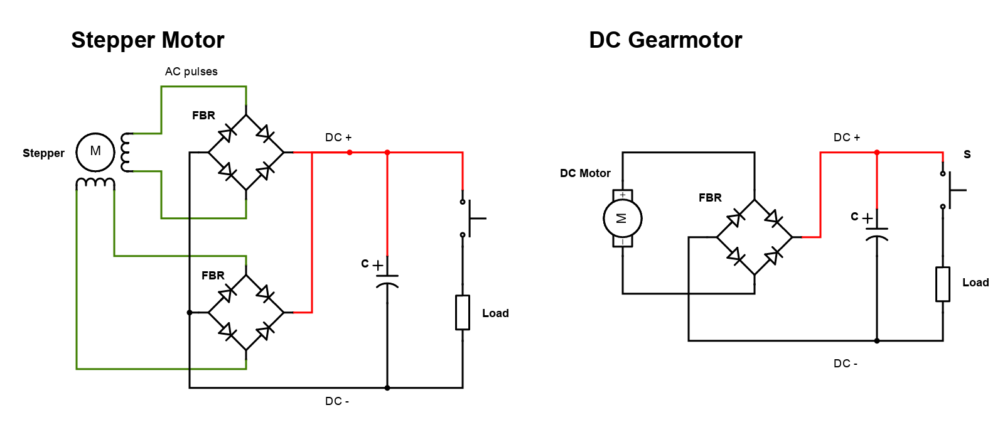
Here’s the circuit again as a vector PDF:
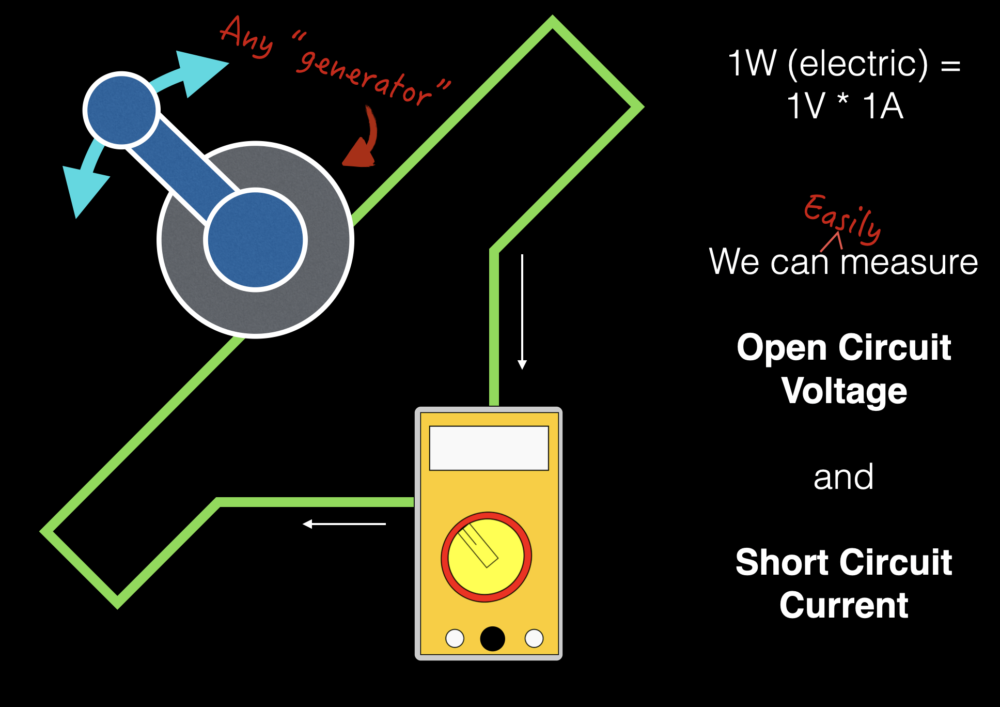
Class 3, February 6: Capturing with Capacitors
We’ll look at a familiar component, the capacitor, in sizes (~1 Farad, or more) where they begin to function as energy storage devices.
In class:
- Discuss McMillen
- Activity:
- Finish rectifiers
- add capacitors
- Technical:
- Rectification and capacitor storage
- Big Picture:
- Orders of Magnitude 1, Koomey’s Law
- Chu’s Energy Servants/Fuller’s Energy Slaves
For next class:
Continue KE for presentation in two weeks (week 5)
Look at solar resources in prep for Solar project (starting in week 5)
See these Hackaday notes on Rectifiers.
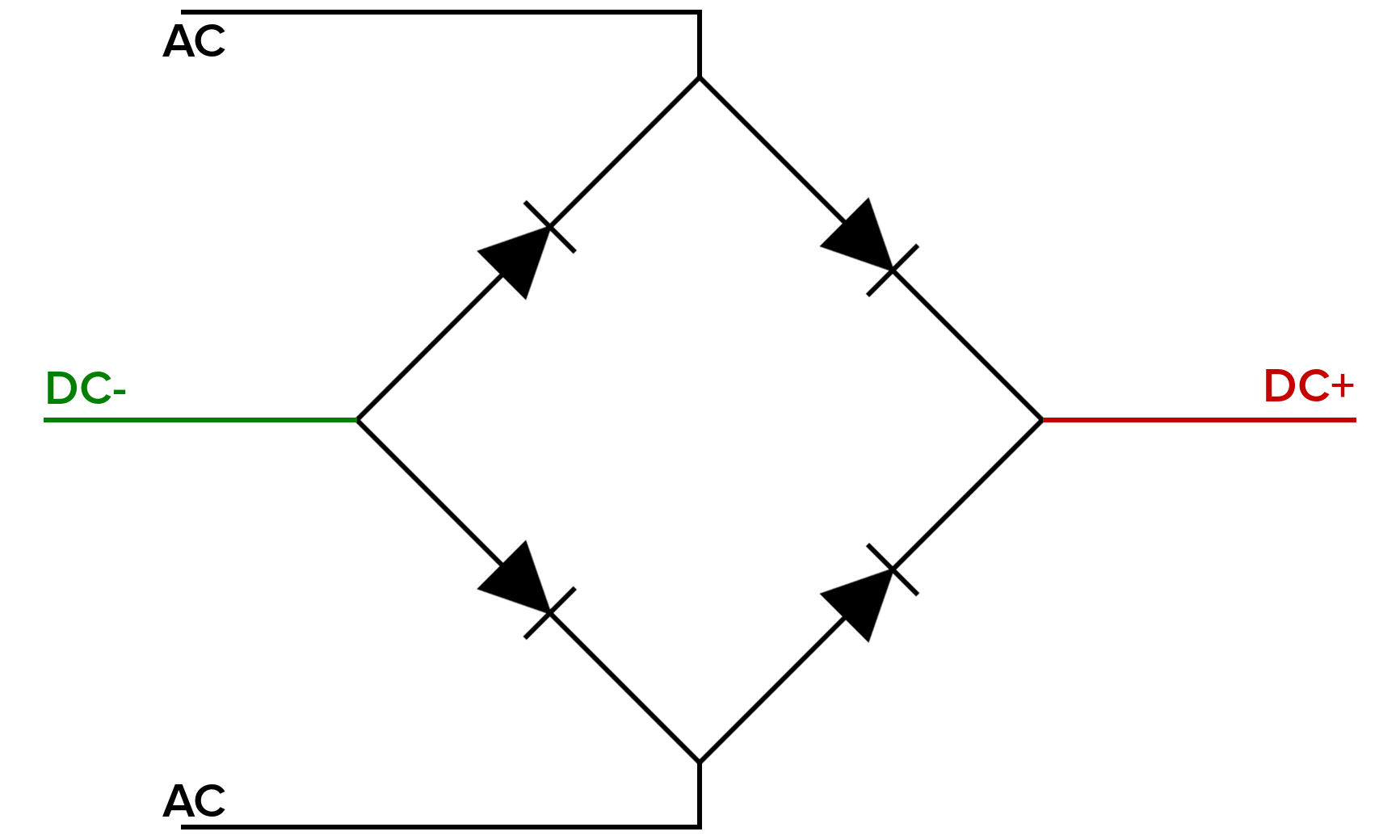
For next week:
- Read Smil chapter 1 & 2
- Finalize kinetic mechanism and circuit, begin final fabrication.
Presentation Materials:
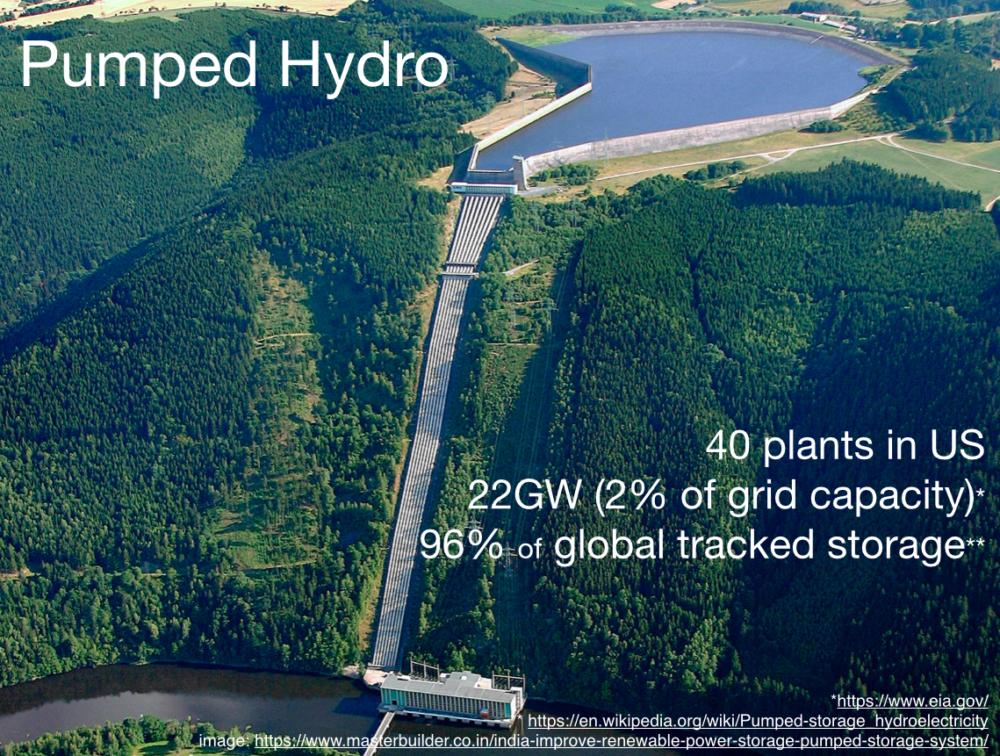
For further reading/watching (as we won’t be able to cover all this in class:)
Class 4, February 13: Big Kinetic
Grid-scale kinetic energy devices, kinetic art examples.
In class: Project check-in. Grid scale kinetic energy. DC-DC converters.
See previous Energy student Jason Gao’s excellent Solar-oid project for an example of a DC-DC converter in use. (Also, great energy estimation and use of small solar for a microcontroller).
Data:
Map of US electrical resources
BP Statistical Review (annual, comprehensive, global energy stats)
For next week:
- Read Smil Chapter 3. This chapter is about muscles, tools, and machines. Note connections to your kinetic projects.
- Finish Kinetic Projects
- New: Select your research area (e.g. Energy and AI), and specific research topic. Note them on the class spreadsheet.
Resources (new):
I’ve been preparing more step-by-step kinetic circuit resources for the undergraduate IMA class, but figured they might be useful to some here as well, so I’m cross-posting them. The include this Kinetic Project checklist that spells out a step-by-step sequence to build a basic project, and these schematics and breadboard diagrams for some basic circuits. Let me know if they are helpful!
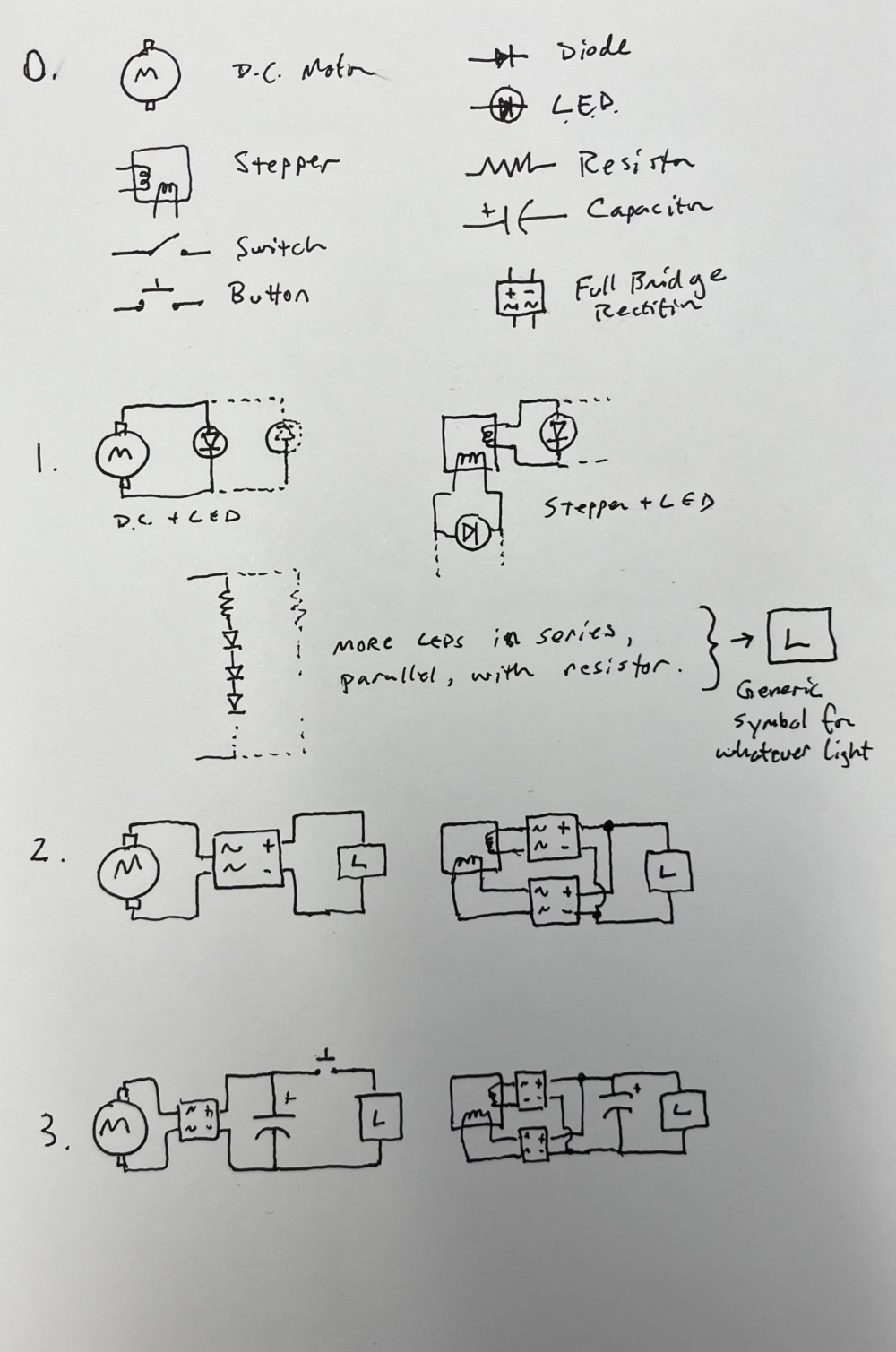
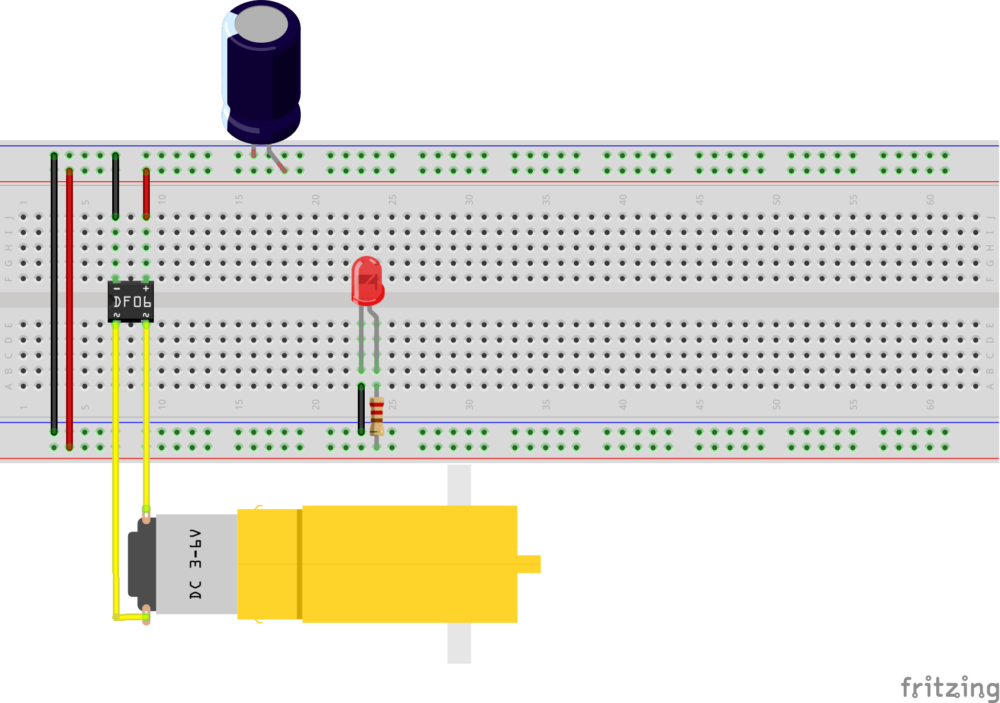
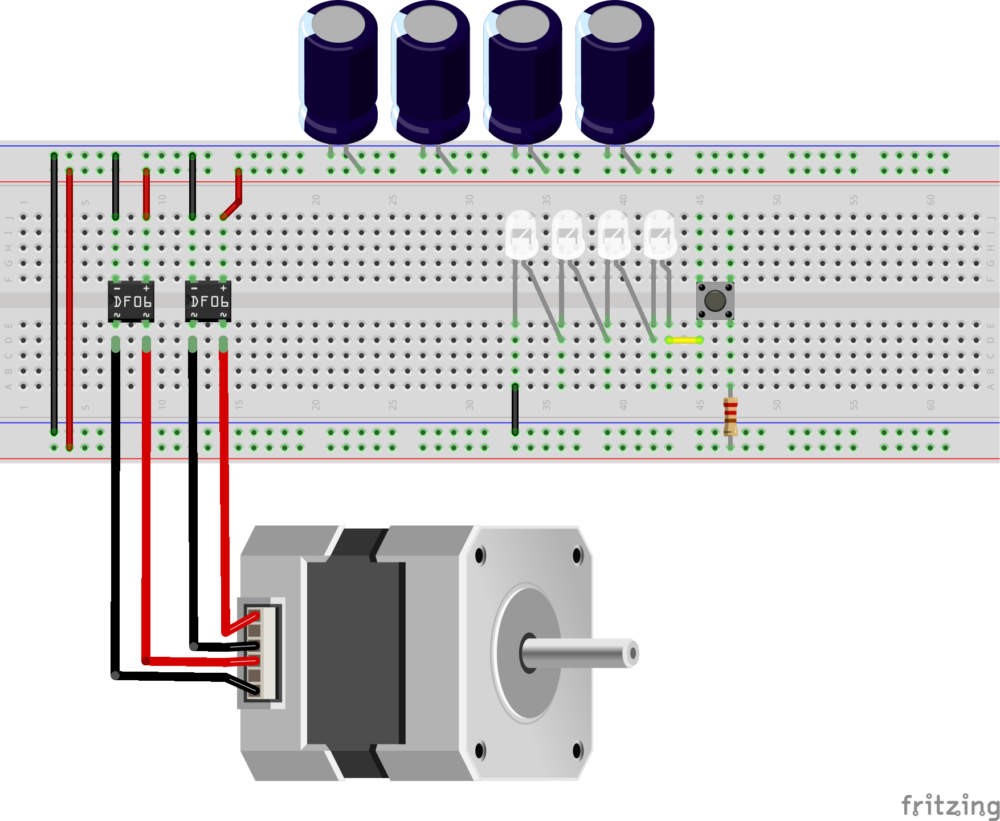
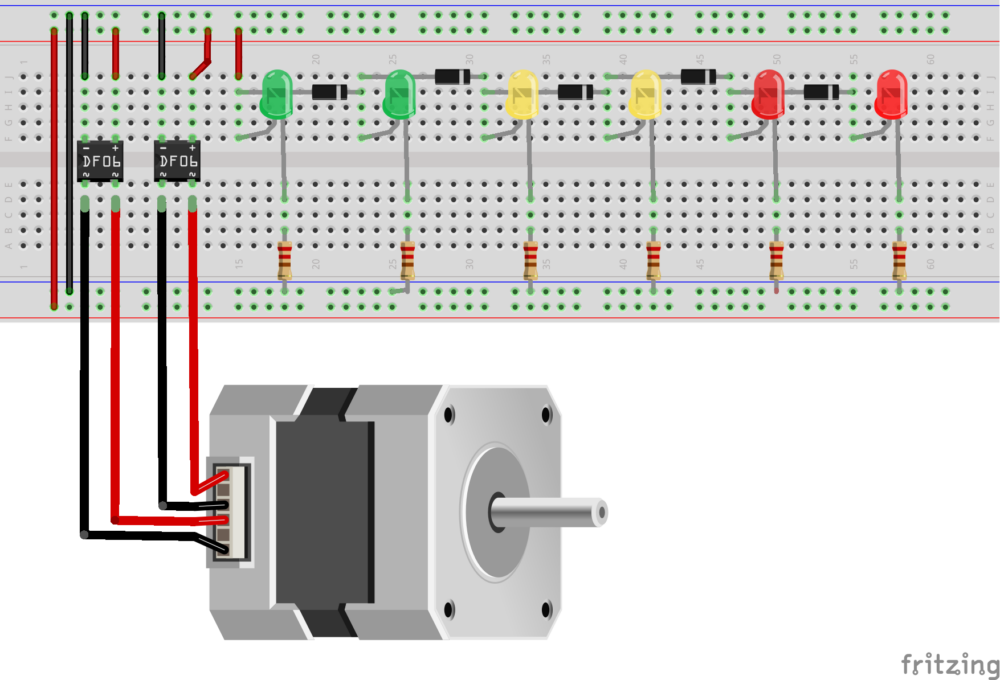

Class 5, February 20: Kinetic Presentations
We see what you made!
In class: Present Kinetic Projects
For next week:
- Smil Chapter 4
Review the work of Trash Club, in particular the projects, readings, resources.Trash Club’s website is offline (but was archived if you’re interested in embodied energy and material waste). Alternatively, listen to this recent Energy Gang Podcast covering AI and the implications of recent federal policy changes related to Energy.- Solar mini assignment: Measure the power required to run a microcontroller. Take any project you already have, and using your multimeter, measure the current needed to power the project. As you already know the voltage, you can determine the power (V*I). If your microcontroller does different things, like turn on and off an LED, or connect to a wifi network and send a message, make sure to measure the current required for each stage. Record your results on your blog.
Class 6, February 27: Let there be…
Converting light into electricity
In class:
- Additional ways to directly measure energy.
- Hands on with equipment in solar cart
- Solar introduction.
For reference: See Brandon Roots’ beautiful solar project (generative art on an e-ink display that reacts to the sun).
For next week:
- Smil chapter 5
- MVP: Using the solar cart and ITP’s panels, try powering a microcontroller the simplest possible way, by attaching the panel to the V-in (before the regulator). Does it work? If so, why? If not, why?
- Identify the materials you think you will need for your solar project – panels, computational load, battery and charge controller (if using), any additional components. Post your BOM (bill of materials) to your blog. Have a plan for getting anything that may have a long lead time.
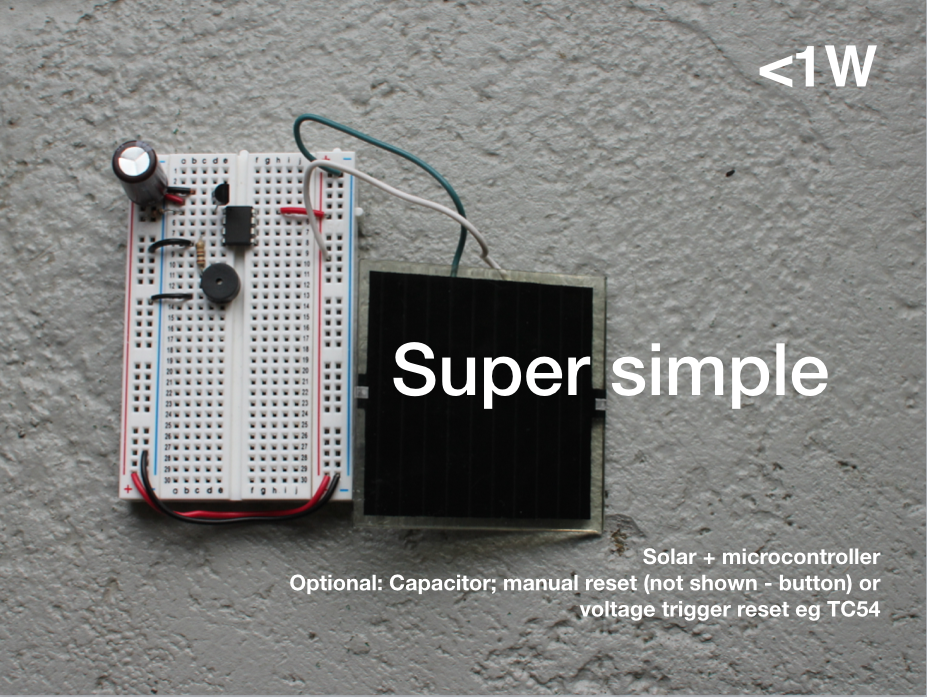
Class 7, March 6: Voltaic Field Trip
We’ll meet at solar panel and battery company Voltaic today! We have the existing aluminum structure to support out projects, which can live safely outside. Your MVP solar and maybe final projects can live there. We’ll review on-site networking options, shade analysis, and project power requirements as they relate to solar availability and battery capacity.
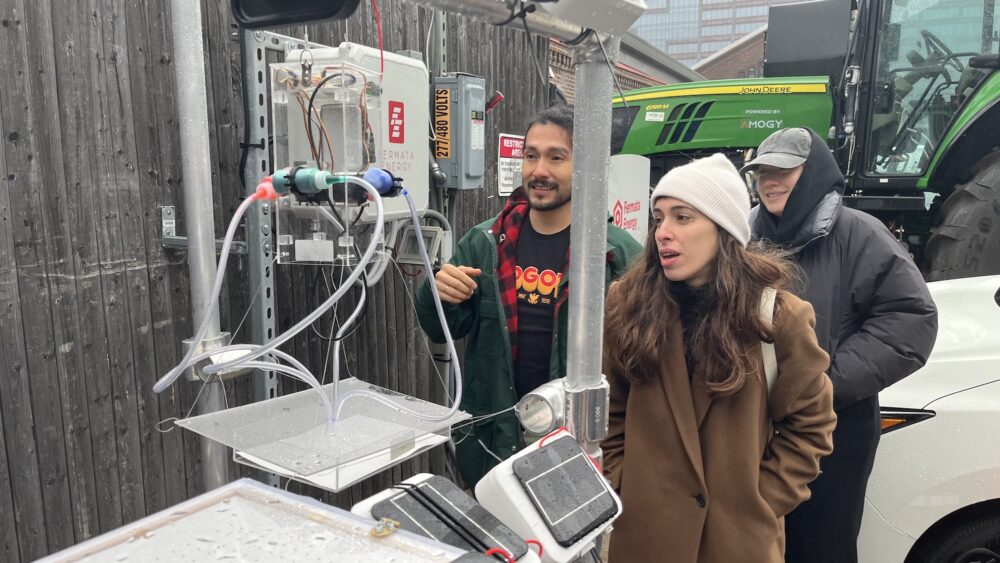
Some useful links and projects:
- Kai’s notes on networking from the 2024 class. (Remember Kai is a current resident)
- Tom’s MQTT examples
- Current student Jinnie is working with Tom to set up an MQTT service hosted on Tom’s site. Look to more notes on how to access that service soon!
- How much light could we expect out site to receive? This ShadeMap tool is the answer.
- Did you know Professor Allison Parish did an amazing, low-power solar project? It uses the AEM10941 Solar Harvesting IC available in this product on Tindie and also from Voltaic.
- IDM Professor Alex Nathanson literally wrote the book on solar art. On sale now – let me know if you want the discount code! Also available (real and digitally) through the NYU library.
- This product lets you monitor the charge on the Voltaic batteries.
Class 8, March 13: Solar 2, Research Round 1
Storing energy in batteries
Research Presentations Round 1: AI and Art/Artists
In class:
- More hands-on with solar cart materials.
- Battery scavenger hunt.
- Battery slides, notes on C-Rate.
For next week:
- Continue developing Solar projects. As soon as possible, test your projects with light from the cart or outdoors. If using a battery, prove to yourself that your project is not just running off the battery, but is also capturing solar energy. Consider ways to minimize your power requirements and gracefully handle power interruptions.
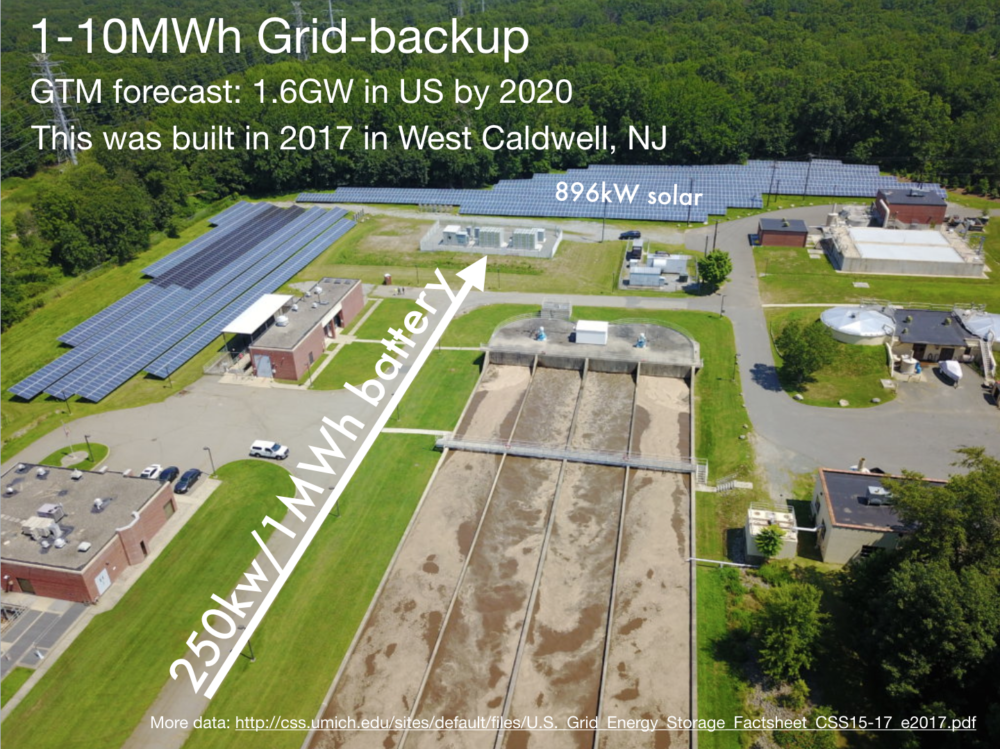
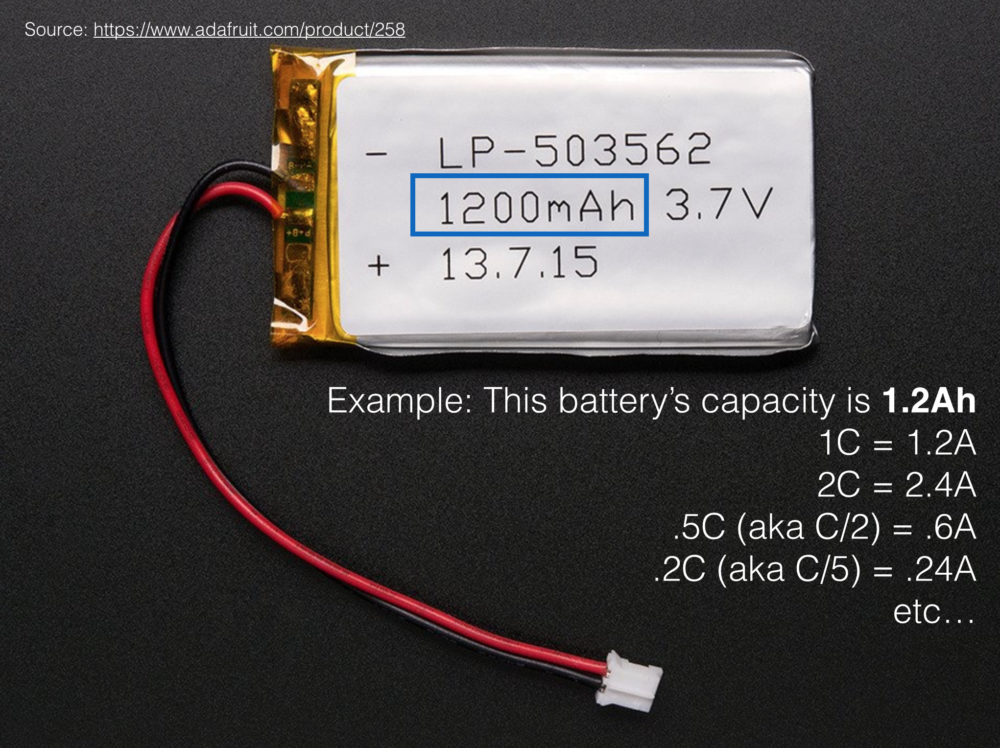
Class 9, March 20: Advanced Solar
Advanced solar topics
In class:
We’ll look at additional solar concepts like maximizers, module-level power electronics, balance of system, 1- and 2-axis tracking systems, concentrators, and alternate materials including multi-junction cells and Perovskites.
For next week:
- Finish and document your solar projects.
- Read the Arduino Low Power Design Guide.

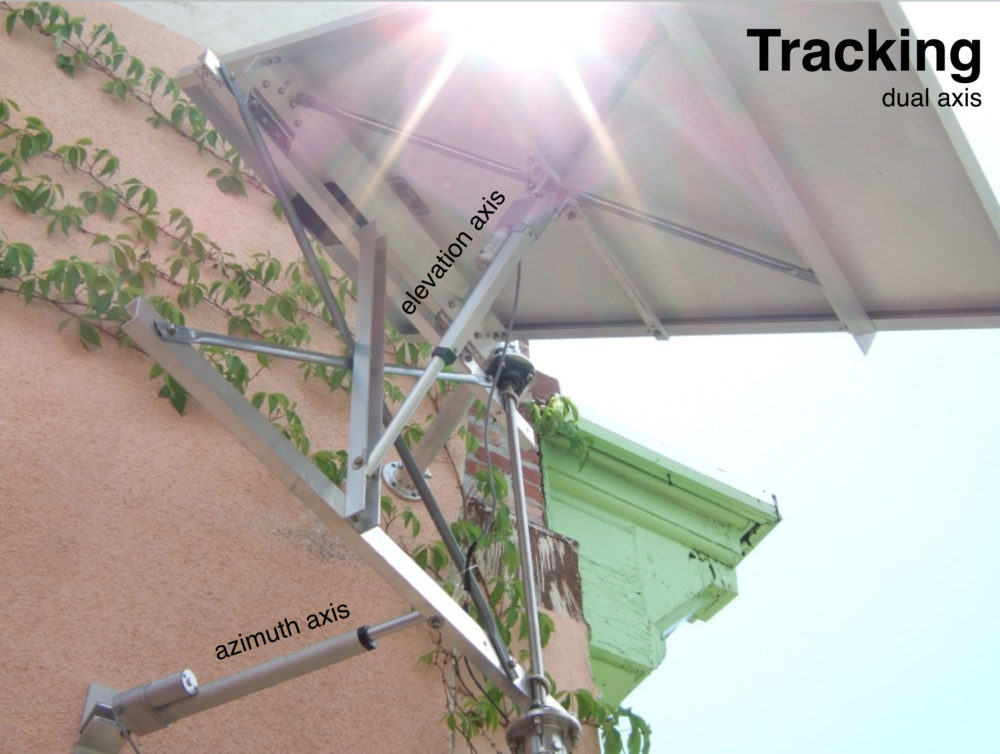
[ Spring Break ]
Class 10, April 3: Solar MVP Presentations
Demonstrate your projects running (at least a bit) off of light
In class: Solar Presentations
For next class:
- Finish Reading Smil!